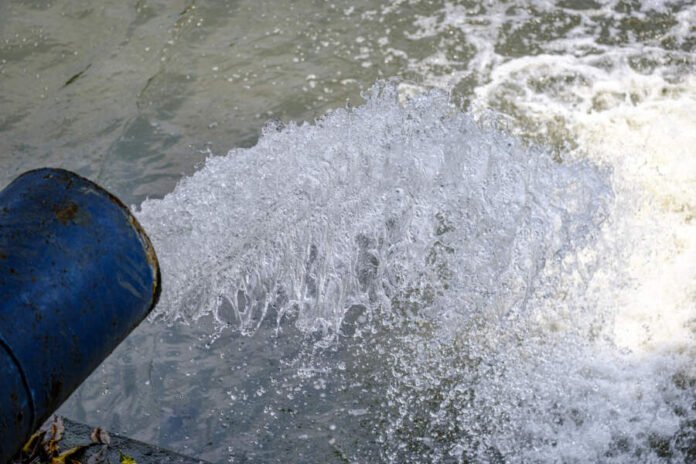
Water is a finite and precious resource, and managing wastewater has become a critical aspect of sustainable business practices. Keeping track of the amount of wastewater your business produces is essential not only to comply with environmental regulations but also to identify opportunities for water conservation and cost reduction.
Fifty percent of lakes and rivers in the US are too polluted for drinking, fishing, and swimming, according to EcoWatch. A lot of these water bodies end up getting polluted due to wastewater being released into them from nearby industries and businesses.
According to the EPA, industries like food and beverage companies, chemical plants, and petroleum refineries release the most amount of wastewater. However, releases from other businesses, no matter how big or small they are, can also pollute these water bodies.
Thus comes the need of monitoring wastewater production, which can be achieved through various methods, and in this article, we will explore five effective ways to accomplish this.
#1 Install Flow Meters
Flow meters are invaluable tools for measuring the volume of wastewater discharged from your business on a real-time basis. There are various types of flow meters available, including magnetic, ultrasonic, and turbine-based, each suitable for different scenarios and budgets. A magnetic flow meter will be ideal to measure the flow rate and flow velocity of your wastewater production.
According to SmartMeasurement, these types of flow meters – also known as mag meters – are free from obstructions, cost-effective, bi-directional, and also provide highly accurate flow measurements. They can be used for a number of different applications including wastewater flow measurement. These devices are typically installed at key points in the wastewater system, such as effluent pipes or outlets, and accurately quantify the flow rate.
#2 Implement Water Audits
Conducting regular water audits is another effective method for monitoring wastewater production and overall water consumption in your business. Water audits involve a comprehensive assessment of water usage across all aspects of your operations. This includes identifying points of water input, assessing water loss, and calculating wastewater output.
During a water audit, businesses can detect inefficient water practices, such as equipment leaks, faulty plumbing, or excessive water usage in specific processes. Once these areas of concern are identified, appropriate corrective measures can be implemented to reduce wastewater production and conserve water resources.
#3 Use Automated Monitoring Systems
Incorporating automated monitoring systems can significantly enhance your ability to track wastewater production. These advanced systems leverage sensor technologies, data analytics, and cloud computing to provide real-time and continuous data on water usage and wastewater generation.
Automated monitoring systems can be programmed to alert facility managers when unusual water consumption patterns are detected, helping to identify leaks or potential equipment malfunctions promptly. For businesses looking for a modern, tech-forward approach to water monitoring, bluebot offers an innovative solution that integrates seamlessly with your existing infrastructure, ensuring accurate wastewater tracking. These systems often come with user-friendly interfaces that present data in a visually appealing and easily understandable manner, making it simple for businesses to keep track of their wastewater production and act upon the insights provided.
#4 Invest in Employee Training and Engagement
One of the most valuable yet often overlooked methods to monitor wastewater production is by fostering a culture of water conservation and responsibility among your employees. Providing training and engaging your staff in sustainable water management practices can significantly impact your business’s water usage.
Educate your employees about the importance of wastewater monitoring, the impact of excessive water usage on the environment, and the benefits of water conservation. You should ask them to report any sort of water-related issues they may encounter. Their insights can help you keep track of wastewater that your primary systems may fail to take note of.
#5 Set Wastewater Reduction Targets
Establishing clear and achievable wastewater reduction targets is essential for tracking wastewater production in the first place and driving continuous improvement. By setting specific, measurable, and time-bound objectives, your business can create a roadmap for reducing wastewater production and optimizing water consumption.
Involve key stakeholders in the goal-setting process to ensure buy-in and commitment from all departments. Regularly track progress against these targets and use the data collected from flow meters, audits, and automated monitoring systems to assess your business’s performance.
Conclusion
Quench USA, Inc. reports that every year, more than a trillion gallons of untreated sewage, groundwater, and industrial waste get discharged into US waters. Thus, it should come as no surprise why 50 percent of lakes and rivers in this country are polluted. However, the time to act is now, and businesses like yours must work accordingly.
Keep the above-discussed tips in mind and track how much wastewater your business produces every day, month, or year. As you do so, you’ll have the opportunity to rethink your water treatment facilities and also ways to reduce wastewater production in the first place.
Read Also: 8 Essential Cybersecurity Tips for Student Bloggers





























































